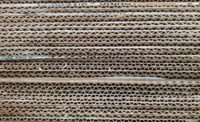Market Trends: Case Study
Cheese Packaging: The Trick with the Holes
Cheese manufacturer Jermi sought increased production to overcome challenges in the packaging process.






Cheese producer and supplier Jermi regularly supplies supermarkets with sliced cheese such as Gouda and Edam. Plastic blisters containing varying types of cheese are packaged in display cartons for this purpose. Jermi needed a new packaging line in order to make the existing production significantly more efficient. To achieve this, a special challenge in the packaging process had to be mastered: The more holes a packaged sliced cheese has, the higher the plastic blister will be. Therefore, the packing heights of the blisters vary constantly. Schubert developed an efficient system for Jermi that successfully tackles this challenge.
What began 120 years ago at Jermi Käsewerk GmbH with the production of cheese and butter for locals has developed over four generations into an international company with 370 employees. Still based in Laupheim-Baustetten near Ulm, Germany, Jermi produces its own processed and fresh cheese specialties and supplies sales, gastronomy and food manufacturers in the sector.
An important part of production is packing the plastic blisters containing the sliced cheese into cartons, which Jermi then delivers to supermarkets. Well-known varieties such as Gouda, Tilsiter, butter cheese or Edam, which are already available in blisters weighing 250 grams or 400 grams, are packed into display cartons with folding tabs on the front. Discounters frequently make use of these convenient package sizes. The handy cartons can be quickly placed on the store shelves so that customers can easily remove the individual blisters. In order to better meet the great demand, Jermi planned to increase production to double the output. For this purpose, the company wanted to invest in a packaging system that could pack the plastic blisters fully automatically and efficiently into the secondary packaging.
Variable Product Height Challenge
However, sliced cheese types, which have plenty of holes, also share an unusual feature: The number of cheese slices per blister must be adjusted to ensure that the weight of goods is identical in every pack. Slices with plenty of holes require more volume at the same weight. Kanellos Tzinieris, area sales manager at Schubert, explains the repercussions: “For this reason, the deep-drawn plastic packaging varies in height. Blisters also bulge where cheese slices have plenty of holes. This means that more protective gas enters the packaging and can expand further.” The result of this phenomenon at Jermi was that different quantities of packs could fit into the carton using the current system.
The specifications for a new plant were therefore clearly defined: The same number of blisters should always be packed in one carton. At the same time, the packaging output had to be increased significantly and the entire process needed to run fully automatically. Due to the technological challenges, Jermi Managing Director Gerhard Jerg decided to work with Schubert for the first time.
Special Pre-Grouping Increases Efficiency
As a solution for the variable product heights, Schubert developed a special pre-grouping system in which pick & place robots stack the blisters in matching cassettes on a Transmodul. The plastic blisters are then placed in stacks into the trays provided and compressed during this process. A robot also pushes the blisters together again when the carton lid is inserted. This allows the space in the secondary packaging to be fully utilized. Moreover, this ensures that each carton contains the identical number of blisters. For Jermi, the newly developed process with the special pre-grouping provides a decisive advantage — around 10% more products can now be transported on the same space and displayed for sale. “We could put an extra layer of plastic blisters in the display carton,” says Tzinieris.
Schubert equipped the packaging line with a further special feature: The TLM machine also inserts blisters into plastic crates instead of unmixed carton trays. They are later packed manually as mixed packages and temporarily stored in the crates in the cold storage. This system also offers flexibility — if required, up to 13 formats can be processed.
Compact Machine, Fully Automated Technology
The compact TLM packaging system developed for Jermi consists of five sub-machines. Two Transmodul sections are integrated into the system. The products are pre-grouped on one of them, and the other one transports the display cartons. While the cheese packages are being fed into the system, the cartons are removed from the magazine and erected. F4 robots pick up the cheese blisters from the infeed belt and place them into the cassettes provided on the Transmodul. From there, F2 robots remove the pre-grouped cheese packages and place them in stacks in the tilted display cartons. In order to finally be able to insert the lids from above into the display cartons, a robot pushes the plastic blisters inwards from the rear wall of the cartons through two specially integrated carton cut-outs.
Gerhard Jerg is impressed with the result. The new TLM line from Schubert, which has found its place in a specially built hall, enables Jermi to produce its cheese in a manner that is very efficient, high-performance and flexible.
Submitted by Gerhard Schubert GmbH
Looking for a reprint of this article?
From high-res PDFs to custom plaques, order your copy today!









